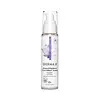What's inside
What's inside
 Key Ingredients
Key Ingredients

 Benefits
Benefits

 Concerns
Concerns

 Ingredients Side-by-side
Ingredients Side-by-side

Water
Skin ConditioningGlycerin
HumectantCamellia Sinensis Leaf Extract
AntimicrobialAcetyl Hexapeptide-8
HumectantCaprylic/Capric Triglyceride
MaskingHydroxypropyl Cyclodextrin
MaskingPalmitoyl Tripeptide-38
Skin ConditioningPanthenol
Skin ConditioningPinus Pinaster Bark Extract
AntioxidantAcacia Seyal Gum Extract
HumectantTocopheryl Acetate
AntioxidantAscorbyl Palmitate
AntioxidantEthylhexyl Palmitate
EmollientHamamelis Virginiana Water
AstringentAesculus Hippocastanum Seed Extract
Skin ConditioningChamomilla Recutita Flower
Skin ConditioningAllantoin
Skin ConditioningXanthan Gum
EmulsifyingSodium Citrate
BufferingMicrocrystalline Cellulose
AbsorbentCellulose Gum
Emulsion StabilisingPotassium Sorbate
PreservativeSodium Hydroxide
BufferingPhenoxyethanol
PreservativeEthylhexylglycerin
Skin ConditioningParfum
MaskingWater, Glycerin, Camellia Sinensis Leaf Extract, Acetyl Hexapeptide-8, Caprylic/Capric Triglyceride, Hydroxypropyl Cyclodextrin, Palmitoyl Tripeptide-38, Panthenol, Pinus Pinaster Bark Extract, Acacia Seyal Gum Extract, Tocopheryl Acetate, Ascorbyl Palmitate, Ethylhexyl Palmitate, Hamamelis Virginiana Water, Aesculus Hippocastanum Seed Extract, Chamomilla Recutita Flower, Allantoin, Xanthan Gum, Sodium Citrate, Microcrystalline Cellulose, Cellulose Gum, Potassium Sorbate, Sodium Hydroxide, Phenoxyethanol, Ethylhexylglycerin, Parfum
Water
Skin ConditioningDipropylene Glycol
HumectantGlycerin
HumectantPentylene Glycol
Skin Conditioning1,2-Hexanediol
Skin ConditioningNiacinamide
SmoothingAcetyl Hexapeptide-8
HumectantCopper Tripeptide-1
Skin ConditioningSh-Polypeptide-121
Skin ConditioningDipeptide Diaminobutyroyl Benzylamide Diacetate
Skin ConditioningOligopeptide-68
BleachingPalmitoyl Tripeptide-8
Skin ConditioningAllantoin
Skin ConditioningSodium Hyaluronate
HumectantAcetyl Glucosamine
Skin ConditioningSerine
MaskingAlanine
MaskingGlycine
BufferingThreonine
Arginine
MaskingProline
Skin ConditioningBetaine
HumectantSodium PCA
HumectantSodium Lactate
BufferingPCA
HumectantGlutamic Acid
HumectantLysine Hcl
Skin ConditioningTocopherol
AntioxidantDextran
Glycine Soja Oil
EmollientHydrogenated Lecithin
EmulsifyingAmmonium Acryloyldimethyltaurate/Vp Copolymer
Polyacrylate Crosspolymer-6
Emulsion StabilisingButylene Glycol
HumectantXanthan Gum
EmulsifyingEthylhexylglycerin
Skin ConditioningAdenosine
Skin ConditioningPolyquaternium-51
Skin ConditioningDisodium EDTA
Citric Acid
BufferingCaprylyl Glycol
EmollientT-Butyl Alcohol
PerfumingPotassium Sorbate
PreservativeSodium Oleate
CleansingWater, Dipropylene Glycol, Glycerin, Pentylene Glycol, 1,2-Hexanediol, Niacinamide, Acetyl Hexapeptide-8, Copper Tripeptide-1, Sh-Polypeptide-121, Dipeptide Diaminobutyroyl Benzylamide Diacetate, Oligopeptide-68, Palmitoyl Tripeptide-8, Allantoin, Sodium Hyaluronate, Acetyl Glucosamine, Serine, Alanine, Glycine, Threonine, Arginine, Proline, Betaine, Sodium PCA, Sodium Lactate, PCA, Glutamic Acid, Lysine Hcl, Tocopherol, Dextran, Glycine Soja Oil, Hydrogenated Lecithin, Ammonium Acryloyldimethyltaurate/Vp Copolymer, Polyacrylate Crosspolymer-6, Butylene Glycol, Xanthan Gum, Ethylhexylglycerin, Adenosine, Polyquaternium-51, Disodium EDTA, Citric Acid, Caprylyl Glycol, T-Butyl Alcohol, Potassium Sorbate, Sodium Oleate
 Reviews
Reviews

Ingredients Explained
These ingredients are found in both products.
Ingredients higher up in an ingredient list are typically present in a larger amount.
Acetyl Hexapeptide-8, commonly known as Argireline or Acetyl Hexapeptide-3, is a popular peptide in skincare. It’s often referred to as a “Botox-like” ingredient because it helps reduce muscle movement.
By relaxing these micro-movements, Argireline may help minimize the appearance of fine lines and wrinkles. That said, it’s not as powerful as Botox, and research on its long-term effectiveness is still limited.
Beyond smoothing, Argireline may also support collagen production. Collagen is the protein that helps keep your skin firm, bouncy, and well-hydrated by strengthening the skin barrier.
So while Argireline isn’t a miracle fix, it can be a helpful addition to a routine focused on both prevention and skin health.
Read more about other common types of peptides here:
Learn more about Acetyl Hexapeptide-8Allantoin is a soothing ingredient known for its protective and moisturizingg properties. Because of this, it is often added to products with strong active ingredients.
Studies show higher concentrations of this ingredient can promote wound healing.
Though it can be derived from the comfrey plant, allantoin is produced synthetically for cosmetic products to ensure purity.
Learn more about AllantoinEthylhexylglycerin (we can't pronounce this either) is commonly used as a preservative and skin softener. It is derived from glyceryl.
You might see Ethylhexylglycerin often paired with other preservatives such as phenoxyethanol. Ethylhexylglycerin has been found to increase the effectiveness of these other preservatives.
Glycerin is already naturally found in your skin. It helps moisturize and protect your skin.
A study from 2016 found glycerin to be more effective as a humectant than AHAs and hyaluronic acid.
As a humectant, it helps the skin stay hydrated by pulling moisture to your skin. The low molecular weight of glycerin allows it to pull moisture into the deeper layers of your skin.
Hydrated skin improves your skin barrier; Your skin barrier helps protect against irritants and bacteria.
Glycerin has also been found to have antimicrobial and antiviral properties. Due to these properties, glycerin is often used in wound and burn treatments.
In cosmetics, glycerin is usually derived from plants such as soybean or palm. However, it can also be sourced from animals, such as tallow or animal fat.
This ingredient is organic, colorless, odorless, and non-toxic.
Glycerin is the name for this ingredient in American English. British English uses Glycerol/Glycerine.
Learn more about GlycerinPotassium Sorbate is a preservative used to prevent yeast and mold in products. It is commonly found in both cosmetic and food products.
This ingredient comes from potassium salt derived from sorbic acid. Sorbic acid is a natural antibiotic and effective against fungus.
Both potassium sorbate and sorbic acid can be found in baked goods, cheeses, dried meats, dried fruit, ice cream, pickles, wine, yogurt, and more.
You'll often find this ingredient used with other preservatives.
Learn more about Potassium SorbateWater. It's the most common cosmetic ingredient of all. You'll usually see it at the top of ingredient lists, meaning that it makes up the largest part of the product.
So why is it so popular? Water most often acts as a solvent - this means that it helps dissolve other ingredients into the formulation.
You'll also recognize water as that liquid we all need to stay alive. If you see this, drink a glass of water. Stay hydrated!
Learn more about WaterXanthan gum is used as a stabilizer and thickener within cosmetic products. It helps give products a sticky, thick feeling - preventing them from being too runny.
On the technical side of things, xanthan gum is a polysaccharide - a combination consisting of multiple sugar molecules bonded together.
Xanthan gum is a pretty common and great ingredient. It is a natural, non-toxic, non-irritating ingredient that is also commonly used in food products.
Learn more about Xanthan Gum